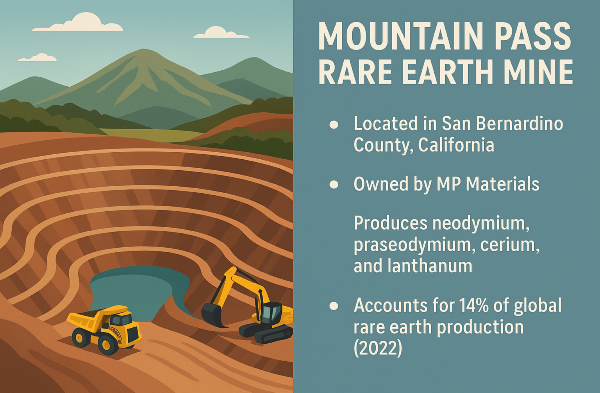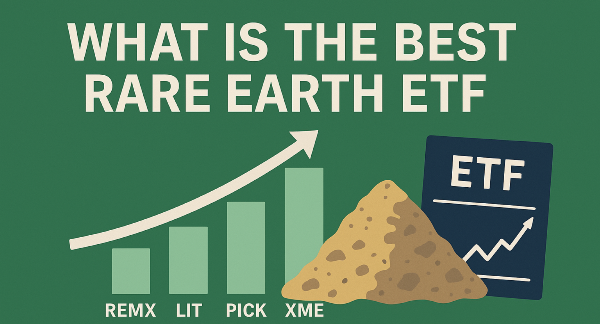Introduction
So, you want to make money without lifting a finger? Welcome to the wonderful world of dividend investing, where companies literally pay you just for owning their stock. Sounds magical, right? Well, not so fast—some dividend stocks are straight-up traps, luring you in with high yields just to rug-pull you later. If you don’t want to get stuck with a dud, you’ve gotta evaluate a few key factors: dividend yield, growth rate, payout ratio, and whether the company is actually, you know, financially stable. Pick wisely, and you’ll have a portfolio that pays you while you binge-watch Netflix.
Understanding Dividend Stocks
Dividend stocks are basically stocks that don’t hoard all their profits like a greedy dragon—they actually share some of that wealth with you. These payouts can help keep your wallet happy while the stock price (hopefully) appreciates. But not all dividend stocks are created equal. You’ve got your high-yield stocks, which pay out big but might be teetering on financial ruin, and your dividend growth stocks, which increase payouts over time like a reliable golden goose. Dividends are clutch for long-term investing, offering stability, protection from market tantrums, and sweet compound growth when reinvested. Get familiar with the types, and you’re already ahead of most investors.
Key Factors in Choosing Dividend Stocks
1. Dividend Yield
Dividend yield is how much cash a stock spits out relative to its price. It’s calculated by dividing the annual dividend by the stock price, then multiplying by 100 for a percentage. Sounds easy, but here’s the catch—insanely high yields often scream "Danger! This company is in trouble!" The safe zone? Usually between 2% and 6%, where dividends are solid without being a desperate cry for help. If it looks too good to be true, it probably is.
2. Dividend Growth Rate
Picking stocks with steady dividend growth is like dating someone who keeps leveling up in life—consistency is key. Companies that increase dividends yearly show financial strength and commitment to rewarding shareholders. Check their dividend history, look for stable yearly hikes, and prioritize Dividend Aristocrats (25+ years of growth) or Dividend Kings (50+ years). Inflation is inevitable, but strong dividend growth helps keep your income from losing value.
3. Payout Ratio
The payout ratio tells you what percentage of profits a company is handing out versus reinvesting. A sensible company keeps its payout ratio below 60%, ensuring enough funds for expansion and rainy days. If a company is coughing up nearly all of its earnings just to keep dividends alive, it’s walking on thin ice. Stay clear of stocks with dangerously high payout ratios unless you love financial horror stories.
4. Company Financial Health
You wouldn’t lend money to your broke friend who spends his entire paycheck on gadgets—so why invest in a company that’s financially unstable? Strong balance sheets, manageable debt, and positive cash flow are all signs of a healthy business. Free cash flow is the golden metric—it shows whether a company can keep paying dividends without borrowing itself into oblivion. Prioritize profitability, because no profits = no dividends.
5. Industry and Economic Trends
Some industries are bulletproof in recessions (think utilities, healthcare, consumer staples), while others crumble under pressure (looking at you, cyclical stocks). Dividend investors should favor resilient sectors that can weather economic storms. Also, keep an eye on market trends—some stocks flourish in certain economic conditions while others nosedive. Diversify across stable and growth sectors, and you’ll hedge against volatility.
6. Dividend Aristocrats and Dividend Kings
Want stocks that keep the dividend checks coming even when the economy is throwing a tantrum? Meet Dividend Aristocrats and Dividend Kings—companies with long histories of dividend increases (25+ and 50+ years, respectively). These stocks are like the wise old wizards of investing: experienced, reliable, and unlikely to let you down. They’re excellent choices for a dividend portfolio with longevity.
Researching and Selecting Stocks
Picking dividend stocks isn’t just about throwing darts at a stock screener. Use financial metrics like P/E ratio, payout ratio, and free cash flow to see which companies deserve a spot in your portfolio. Valuation tools like the dividend discount model (DDM) help determine if a stock is overpriced or an absolute steal. Diversification is key—spread investments across industries to dodge big losses. And, of course, use stock screeners and research sites to track performance like a pro.
Common Mistakes to Avoid
First mistake? Chasing high yields like a moth to a flame. If a stock’s yield looks too juicy, it could be a sign of trouble. Second mistake: ignoring financial fundamentals. Just because a company pays dividends today doesn’t mean it’ll still be around tomorrow. Lastly, failing to diversify—don’t put all your eggs in one basket unless you enjoy watching your portfolio crumble when a single stock crashes.
Conclusion
Dividend investing isn’t rocket science, but it does take discipline. Stick to financially strong companies with sustainable dividends and consistent growth, avoid chasing flashy yields, and keep your portfolio diversified. It’s not just about collecting passive income today—it’s about setting yourself up for financial success in the long run. Play it smart, and your future self will thank you.
🚀 Master Dividend Investing – Your Ultimate Guide 💰
Looking to supercharge your portfolio with dividend stocks? 📈 Check out these essential reads:
🏆 Top Dividend Stocks & Strategies
💰 Passive Income & Dividend Power Moves
🔍 How to Pick Winning Dividend Stocks
📊 Dividend Ratios & Metrics
⚡ Dividend Timing & Tax Strategies
🔗 Bookmark this guide & start your dividend wealth journey today! 🚀💸




























Introduction
So, you want to make money without lifting a finger? Welcome to the wonderful world of dividend investing, where companies literally pay you just for owning their stock. Sounds magical, right? Well, not so fast—some dividend stocks are straight-up traps, luring you in with high yields just to rug-pull you later. If you don’t want to get stuck with a dud, you’ve gotta evaluate a few key factors: dividend yield, growth rate, payout ratio, and whether the company is actually, you know, financially stable. Pick wisely, and you’ll have a portfolio that pays you while you binge-watch Netflix.
Understanding Dividend Stocks
Dividend stocks are basically stocks that don’t hoard all their profits like a greedy dragon—they actually share some of that wealth with you. These payouts can help keep your wallet happy while the stock price (hopefully) appreciates. But not all dividend stocks are created equal. You’ve got your high-yield stocks, which pay out big but might be teetering on financial ruin, and your dividend growth stocks, which increase payouts over time like a reliable golden goose. Dividends are clutch for long-term investing, offering stability, protection from market tantrums, and sweet compound growth when reinvested. Get familiar with the types, and you’re already ahead of most investors.
Key Factors in Choosing Dividend Stocks
1. Dividend Yield
Dividend yield is how much cash a stock spits out relative to its price. It’s calculated by dividing the annual dividend by the stock price, then multiplying by 100 for a percentage. Sounds easy, but here’s the catch—insanely high yields often scream "Danger! This company is in trouble!" The safe zone? Usually between 2% and 6%, where dividends are solid without being a desperate cry for help. If it looks too good to be true, it probably is.
2. Dividend Growth Rate
Picking stocks with steady dividend growth is like dating someone who keeps leveling up in life—consistency is key. Companies that increase dividends yearly show financial strength and commitment to rewarding shareholders. Check their dividend history, look for stable yearly hikes, and prioritize Dividend Aristocrats (25+ years of growth) or Dividend Kings (50+ years). Inflation is inevitable, but strong dividend growth helps keep your income from losing value.
3. Payout Ratio
The payout ratio tells you what percentage of profits a company is handing out versus reinvesting. A sensible company keeps its payout ratio below 60%, ensuring enough funds for expansion and rainy days. If a company is coughing up nearly all of its earnings just to keep dividends alive, it’s walking on thin ice. Stay clear of stocks with dangerously high payout ratios unless you love financial horror stories.
4. Company Financial Health
You wouldn’t lend money to your broke friend who spends his entire paycheck on gadgets—so why invest in a company that’s financially unstable? Strong balance sheets, manageable debt, and positive cash flow are all signs of a healthy business. Free cash flow is the golden metric—it shows whether a company can keep paying dividends without borrowing itself into oblivion. Prioritize profitability, because no profits = no dividends.
5. Industry and Economic Trends
Some industries are bulletproof in recessions (think utilities, healthcare, consumer staples), while others crumble under pressure (looking at you, cyclical stocks). Dividend investors should favor resilient sectors that can weather economic storms. Also, keep an eye on market trends—some stocks flourish in certain economic conditions while others nosedive. Diversify across stable and growth sectors, and you’ll hedge against volatility.
6. Dividend Aristocrats and Dividend Kings
Want stocks that keep the dividend checks coming even when the economy is throwing a tantrum? Meet Dividend Aristocrats and Dividend Kings—companies with long histories of dividend increases (25+ and 50+ years, respectively). These stocks are like the wise old wizards of investing: experienced, reliable, and unlikely to let you down. They’re excellent choices for a dividend portfolio with longevity.
Researching and Selecting Stocks
Picking dividend stocks isn’t just about throwing darts at a stock screener. Use financial metrics like P/E ratio, payout ratio, and free cash flow to see which companies deserve a spot in your portfolio. Valuation tools like the dividend discount model (DDM) help determine if a stock is overpriced or an absolute steal. Diversification is key—spread investments across industries to dodge big losses. And, of course, use stock screeners and research sites to track performance like a pro.
Common Mistakes to Avoid
First mistake? Chasing high yields like a moth to a flame. If a stock’s yield looks too juicy, it could be a sign of trouble. Second mistake: ignoring financial fundamentals. Just because a company pays dividends today doesn’t mean it’ll still be around tomorrow. Lastly, failing to diversify—don’t put all your eggs in one basket unless you enjoy watching your portfolio crumble when a single stock crashes.
Conclusion
Dividend investing isn’t rocket science, but it does take discipline. Stick to financially strong companies with sustainable dividends and consistent growth, avoid chasing flashy yields, and keep your portfolio diversified. It’s not just about collecting passive income today—it’s about setting yourself up for financial success in the long run. Play it smart, and your future self will thank you.
🚀 Master Dividend Investing – Your Ultimate Guide 💰
Looking to supercharge your portfolio with dividend stocks? 📈 Check out these essential reads:
🏆 Top Dividend Stocks & Strategies
💰 Passive Income & Dividend Power Moves
🔍 How to Pick Winning Dividend Stocks
📊 Dividend Ratios & Metrics
⚡ Dividend Timing & Tax Strategies
🔗 Bookmark this guide & start your dividend wealth journey today! 🚀💸